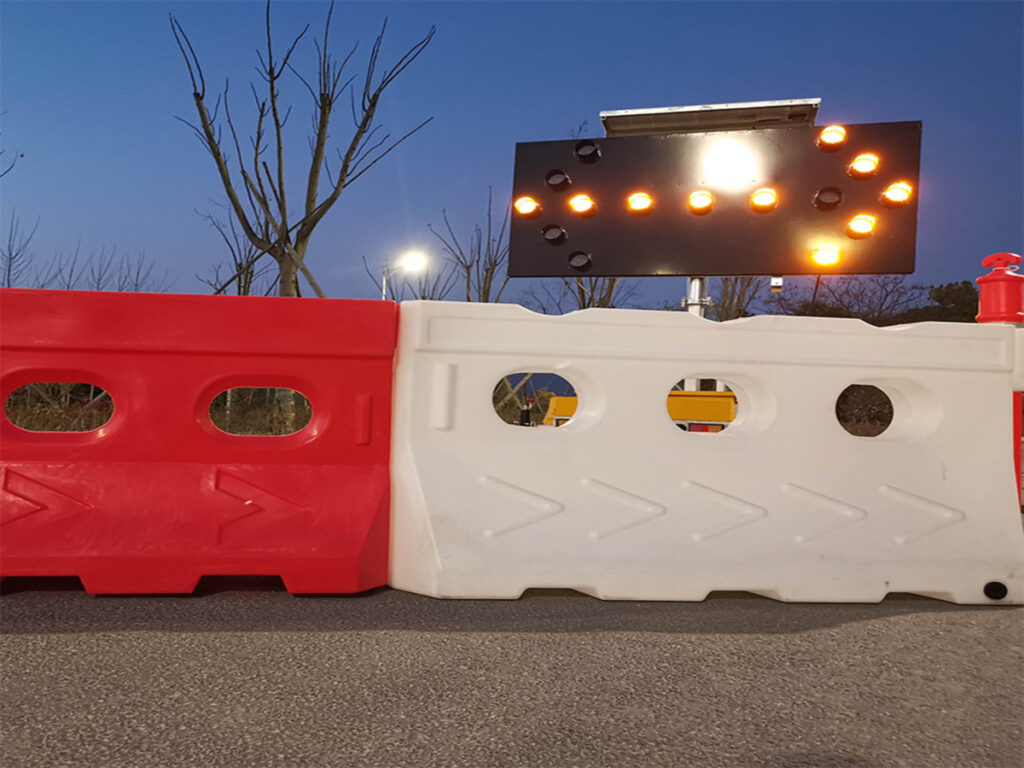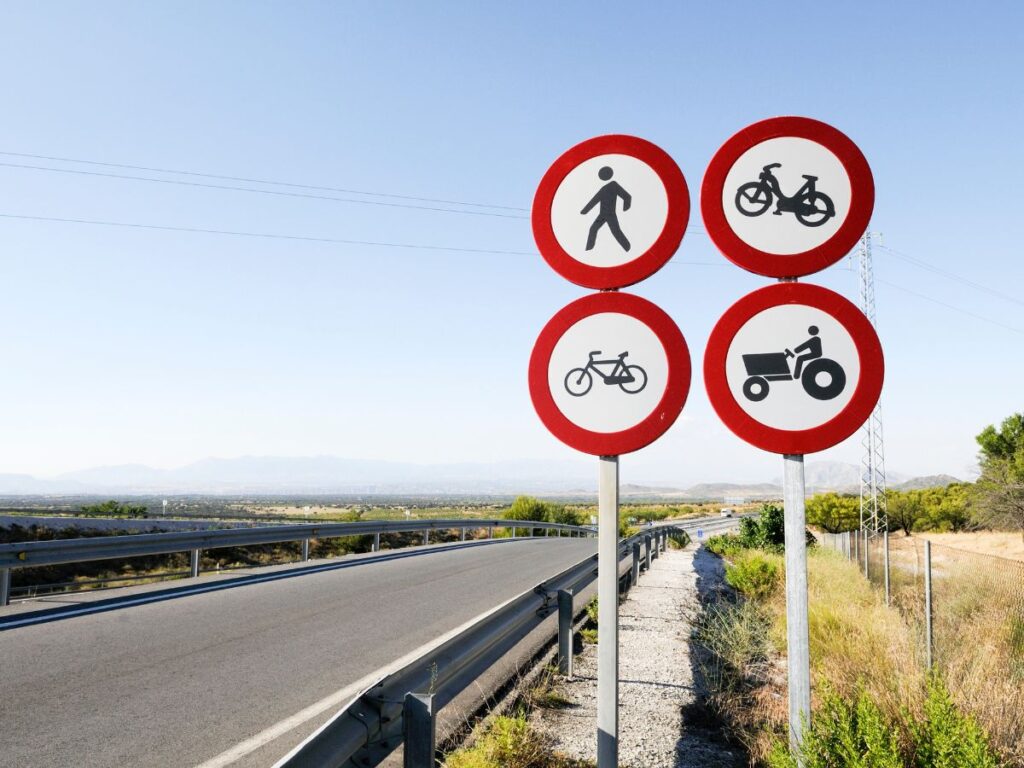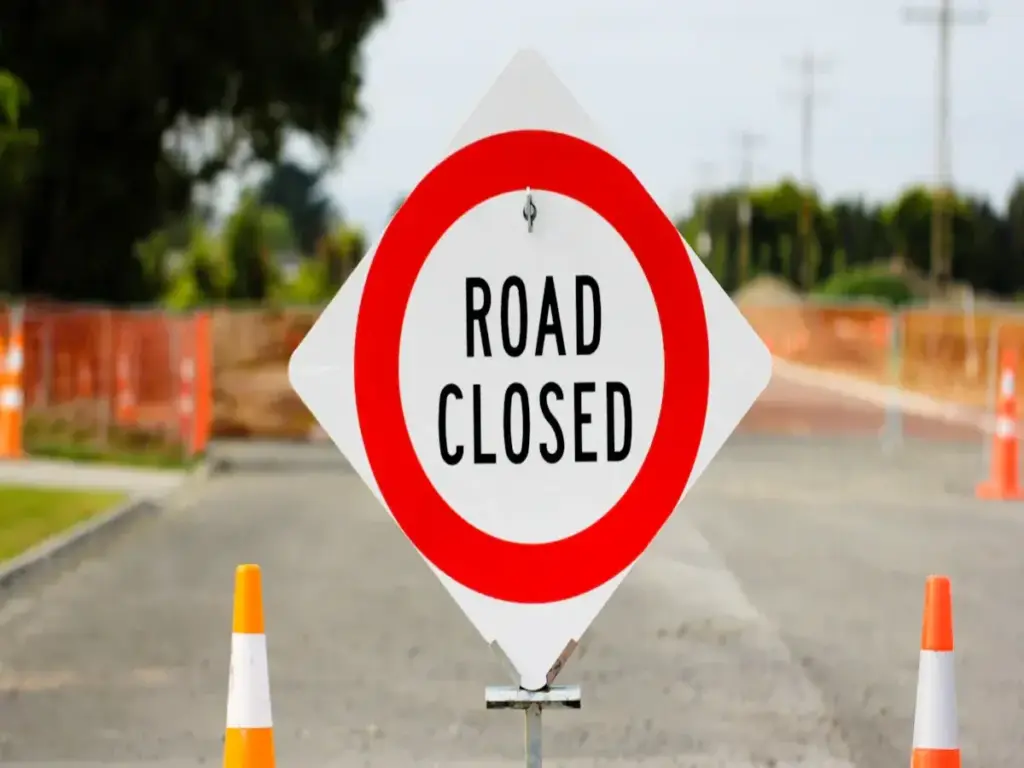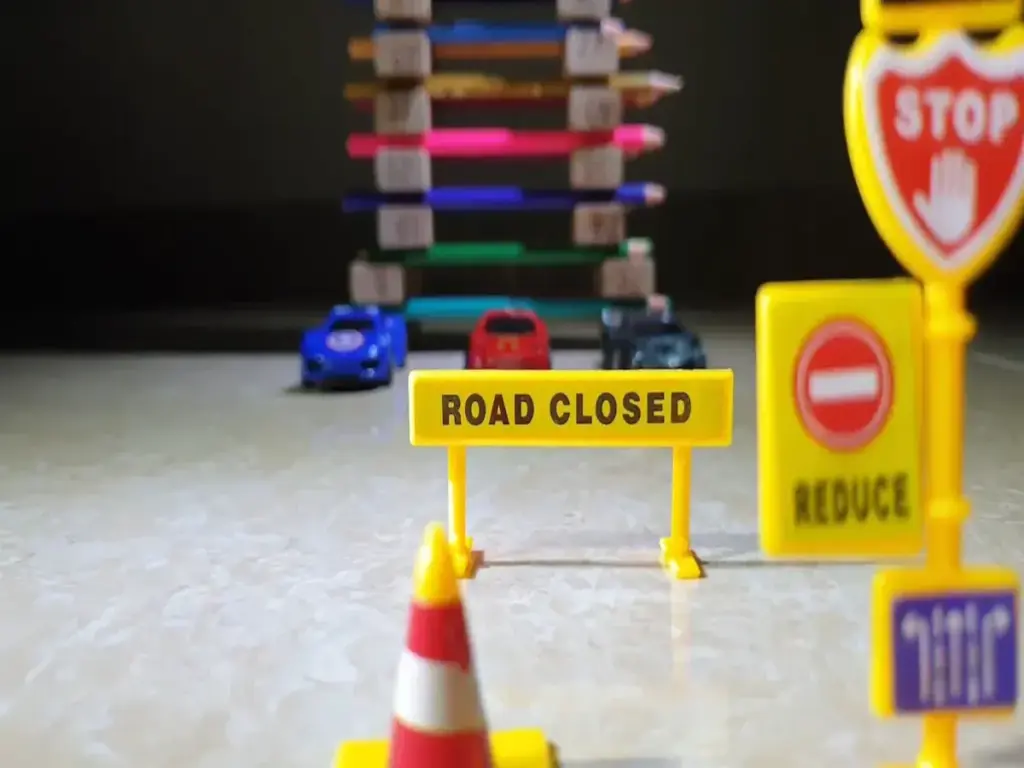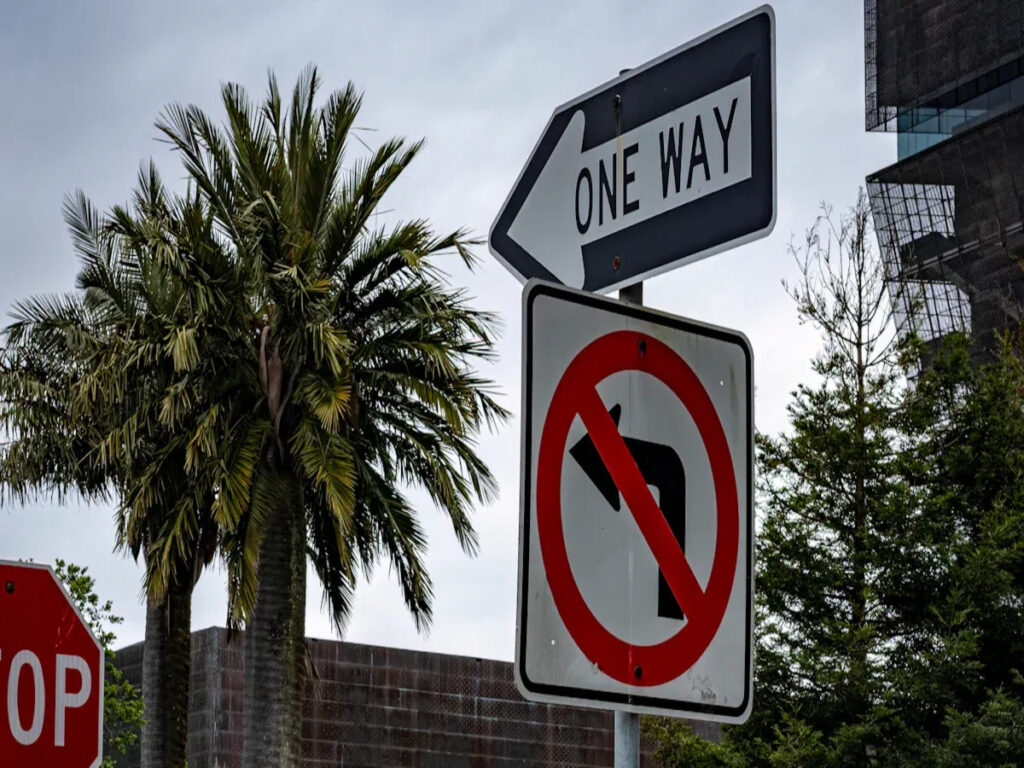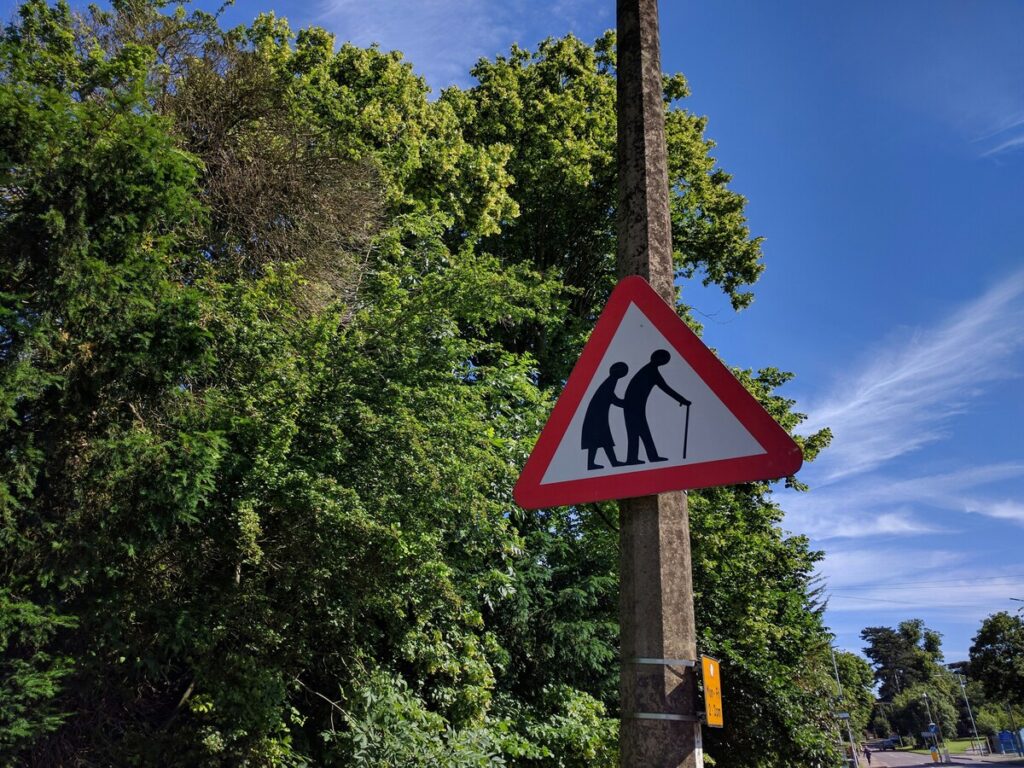
RA1, RA2, и R3B - правила для отражающего трафика в Великобритании. Каждое правило означает различное количество отражательной способности. Это помогает водителям хорошо видеть знаки в любую погоду. Рефлексивные знаки очень важны для остановки несчастных случаев. Они помогают больше всего ночью или когда погода плохая. Правила Великобритании говорят, что дорожные знаки должны использовать специальные рефлексивные материалы. Эти материалы должны следовать строгим правилам, чтобы обеспечить безопасность людей. Использование правильного отражающего листа следует закону. Это также помогает водителям остаться в своих полосах. Водители могут быстрее обнаруживать опасности с правильными знаками.
В Optraffic, мы предоставляем широкий спектр Отражающие дорожные знаки которые соответствуют стандартам Великобритании, включая РА1, RA2, и R3B. Наши высококачественные материалы обеспечивают максимальную видимость и безопасность для водителей., помогает снизить количество аварий и сделать дороги более безопасными. Изучите наш ассортимент сегодня, чтобы обеспечить соответствие требованиям и повысить безопасность дорожного движения..
Ключевые выводы
- Светоотражающая пленка позволяет водителям видеть знаки в ночное время. Это также помогает в плохую погоду. Это делает дороги более безопасными для всех.
- RA1, RA2, и R3B — правила Великобритании для светоотражающих материалов.. Каждый из них дает разные уровни яркости и силы..
- RA1 хорошо работает на тихих дорогах с медленными машинами.. RA2 хорош для главных дорог и оживленных улиц.. R3B лучше всего подходит для автомагистралей и скоростных дорог..
- Закон гласит, что вы должны использовать подходящую светоотражающую пленку.. Это помогает предотвратить несчастные случаи, делая знаки видимыми издалека..
- Знаки нужно часто проверять и чинить.. Это держит их яркими и хорошо работает. Это также помогает им соблюдать правила безопасности и прослужить дольше..
Светоотражающие дорожные знаки в Великобритании
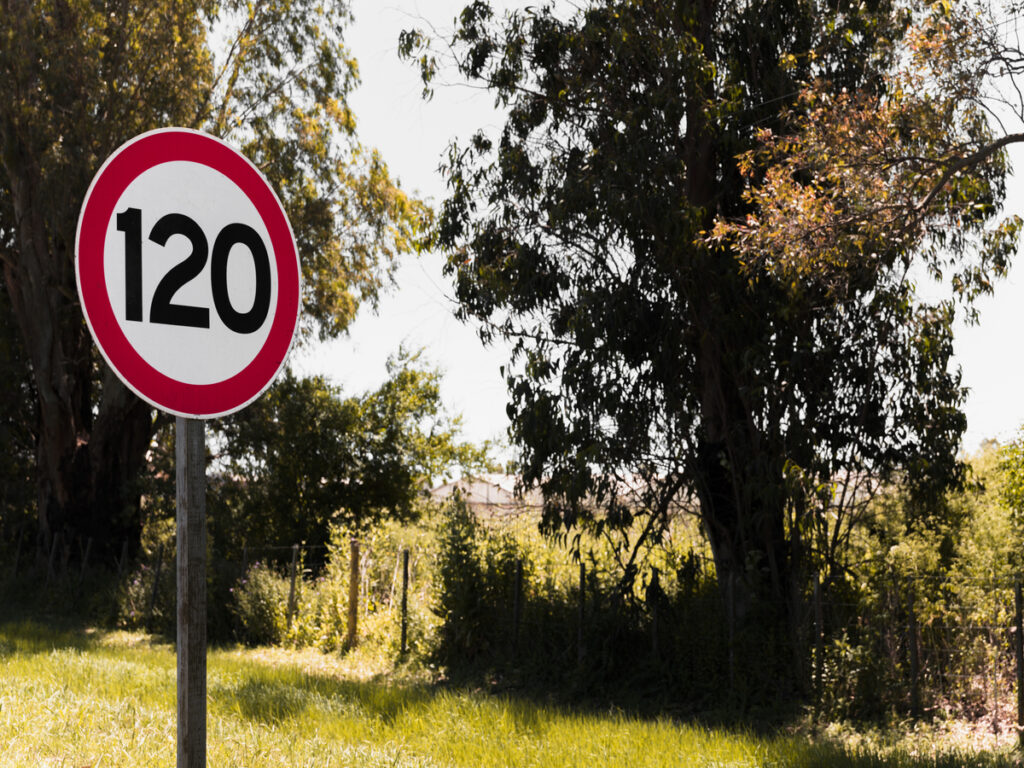
Что такое светоотражающая пленка?
Светоотражающая пленка – специальный материал для дорожных знаков.. Это помогает дорожным знакам сиять, когда на них попадает свет.. В этом материале описаны многие дорожные знаки в Великобритании.. Он работает, отражая свет фар автомобиля обратно к водителям.. Это позволяет легко увидеть знаки ночью или при слабом освещении.. Существуют различные типы светоотражающих пленок.. Engineer Grade использует крошечные стеклянные бусины для отражения света.. В призматической пленке высокой интенсивности используются маленькие призмы, чтобы сделать вывески ярче.. В листах Diamond Grade используются усовершенствованные микропризмы для самых ярких знаков.. На некоторых дорожных знаках используется флуоресцентная светоотражающая пленка.. Этот тип использует специальные цвета, чтобы сделать вывески ярче днем и в сумерках.. Эти материалы помогают водителям быстро увидеть важную информацию., даже в тумане или дождю.
| Тип светоотражающей пленки | Технология используется | Типичное использование | Уровень отражательной способности |
|---|---|---|---|
| Инженерный класс | Стеклянная бусина | Знаки названия улицы, некритичный | Умеренный |
| Высокоинтенсивные призматические | Микропризматические линзы | Предупреждающие и нормативные знаки | Высокий |
| Алмазный класс | Кубическая угловая микропризма | Автомагистраль и важные дорожные знаки | Очень высоко |
| Флуоресцентный светоотражающий | Специальные пигменты | Школьные зоны, резкие повороты, рабочие зоны | Увеличен |
Почему отражательная способность имеет значение
Отражательная способность очень важна для безопасности дорожного движения.. Светоотражающие дорожные знаки помогают водителям четко видеть и читать знаки.. Это полезно, когда темно или идет дождь.. Хорошая отражающая способность позволяет водителям замечать знаки издалека.. Это дает им больше времени, чтобы отреагировать и оставаться в безопасности.. Исследования показывают, что яркие знаки с флуоресцентной пленкой могут снизить количество аварий до 40% на пешеходных переходах и 35% на сельских дорогах. Британские правила гласят, что дорожные знаки должны быть хорошо видны в любую погоду и при любом освещении.. Светоотражающие материалы помогают знакам выделяться ночью и в плохую погоду..
Кончик: Светоотражающие дорожные знаки с высокой отражающей способностью помогают пожилым водителям и людям со слабым зрением, облегчая видимость знаков..
Испытания показывают, что светоотражающие знаки можно увидеть с любой точки. 170 метры от него. Неотражающие знаки можно увидеть только с расстояния менее 40 метры. Это дополнительное расстояние дает водителям больше времени для замедления или перестроения.. Отражательная способность также помогает водителям быстрее реагировать и избегать аварий.. Использование подходящей световозвращающей пленки повышает безопасность на дороге., день и ночь.
Стандарты отражательной способности и их развитие
Ранняя видимость дорожных знаков
Давно, Дорожные знаки Великобритании использовали краску или металл., из-за этого их было трудно увидеть ночью. В 1930-е годы, инженеры экспериментировали с новыми идеями, смешивая стеклянные шарики с влажной краской.. Из-за этого знаки светились при попадании на них фар.. К концу 1940-х годов, инженеры разработали новое покрытие со стеклянными шариками, сделать вывески ярче и их легче увидеть при слабом освещении. В конце 1950-х годов, инженеры представили листы инженерного класса, у которого были стеклянные бусины внутри прозрачного слоя, повышение долговечности и яркости вывесок. В начале 1970-х годов, листовое покрытие высокой интенсивности стало обычным явлением, сделать вывески более заметными и прослужить до десяти лет. А в конце 1980-х гг., инженеры изобрели микропризматическую технологию, использование крошечных призм для отражения большего количества света, что сделало знаки намного ярче и видимыми с больших расстояний..
| Период | Описание этапа |
|---|---|
| 1930с | Стеклянные бусины на влажной краске для отражающей способности.. |
| Конец 1940-х годов | Представлено открытое световозвращающее полотно из стеклянных шариков. |
| Конец 1950-х годов | Защитное покрытие инженерного класса со встроенными стеклянными шариками.. |
| Начало 1970-х годов | Высокоинтенсивное защитное покрытие для улучшения видимости и долговечности.. |
| Конец 1980-х годов | Микропризматическая технология для превосходной отражательной способности и видимости.. |
Установление стандартов
По мере улучшения знаков, Великобритания установила четкие правила. The TSRGD и BS один 12899-1:2007 являются основными стандартами дорожных знаков. Эти правила устанавливают три класса: Класс РА1, Класс РА2, и R3B. В каждом классе используются разные технологии, адаптированные к конкретным типам дорог.. В классе RA1 используются стеклянные шарики, что идеально подходит для более тихих дорог.. В классе RA2 используется микропризматическая технология., что почти вдвое увеличивает яркость знаков. Как результат, водители могут видеть эти знаки с расстояния до 250 метры от него. Р3Б, с другой стороны, использует передовую микропризматическую технологию, что делает его самым ярким и долговечным вариантом. Используется на автомагистралях и надземных знаках.. Более того, правила указывают, что знаки необходимо регулярно проверять и поддерживать в хорошем состоянии.. Микропризматическое световозвращающее покрытие стало самой эффективной технологией, обеспечение того, чтобы Великобритания могла сделать дороги безопасными для всех.
RA1, RA2, и светоотражающие материалы R3B
Обзор светоотражателей RA1
Самый основной тип светоотражающей пленки для дорожных знаков в Великобритании — RA1.. Он использует стеклянные бусины, чтобы возвращать фары автомобиля водителям.. На тихих улицах и частных дорогах вы увидите знаки класса ra1.. Эти знаки не используются на автомагистралях или оживленных дорогах с двусторонним движением.. Светоотражатель RA1 лучше всего работает там, где есть уличные фонари и машины движутся медленно..
- Светоотражатель RA1 экономит деньги муниципалитетам и строителям.
- Он обеспечивает достаточную яркость там, где знаки не должны выделяться..
- Вы часто видите светоотражающий знак RA1 на знаках в городах и на городских улицах..
The Департамент для транспорта утверждает, что светоотражающая способность RA1 должна соответствовать яркости не менее 75 кд/м²/люкс. Погода и повреждения могут со временем снизить его яркость., поэтому необходимы регулярные проверки. Светоотражающая способность RA1 хорошо подходит для знаков, которые не должны быть видны с большого расстояния или в условиях плохой освещенности..
Примечание: Светоотражатель RA1 не подходит для автомагистралей или опасных мест., потому что он недостаточно яркий для быстрых машин.
Обзор светоотражателей RA2
Светоотражающая пленка RA2 ярче и служит дольше, чем RA1.. В нем используются более качественные стеклянные бусины или микропризмы, которые отражают больше света.. Светоотражатель RA2 используется для большинства основных дорожных знаков в Великобритании.. Знаки класса ra2 встречаются на оживленных дорогах и в местах, где автомобили движутся быстрее.. Светоотражающее покрытие RA2 отлично подходит для предупреждающих знаков и ограничений скорости..
| Параметр | RA1 (Тип А) | RA2 (Тип Б) |
|---|---|---|
| Средняя световозвращающая способность (CD/LX/M²) | 29 | 187 |
| Световозвращающая способность стандартного отклонения | 18 | 89.9 |
| Световозвращающая способность RSD (%) | 63 | 48 |
| Средняя дневная скорость обнаружения | 0.80 | 0.88 |
| Стандартное отклонение дневного времени | 0.17 | 0.06 |
| Дневное обнаружение RSD (%) | 21 | 6 |
| Средняя скорость обнаружения в ночное время | 0.83 | 0.87 |
| Обнаружение в ночное время, стандартная версия | 0.19 | 0.08 |
| Ночное обнаружение RSD (%) | 23 | 9 |
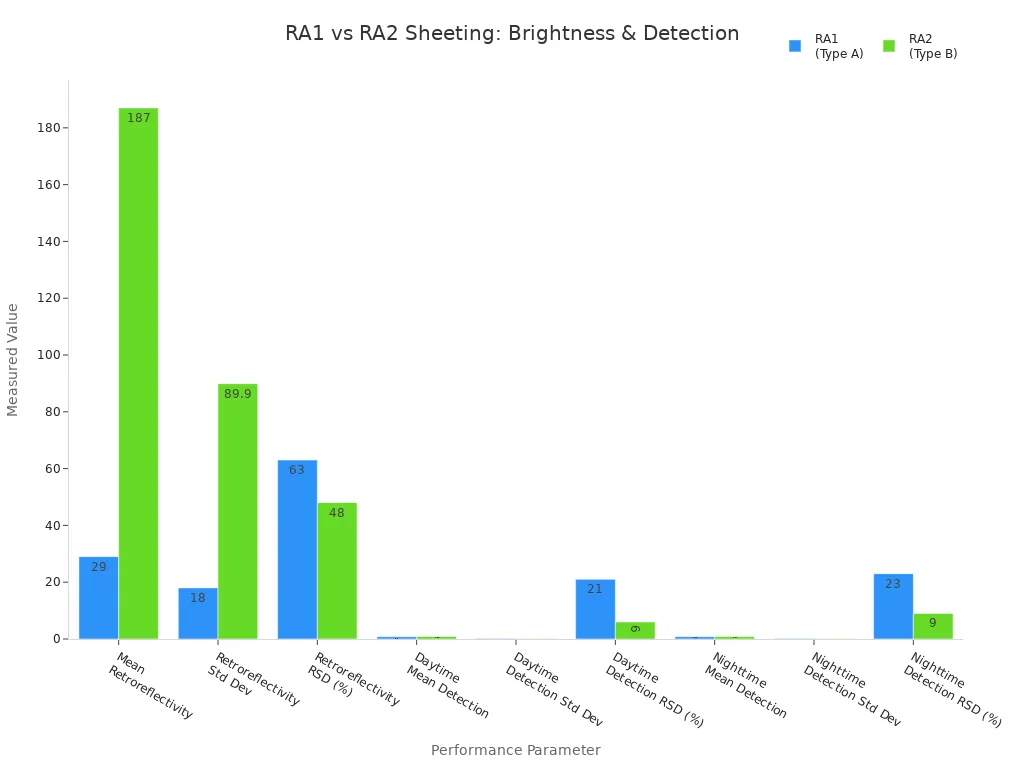
Светоотражающее покрытие RA2 намного ярче, чем RA1, и помогает водителям лучше видеть знаки.. Диаграмма показывает, что светоотражающие элементы RA2 легче обнаружить., Особенно ночью. Светоотражатель RA2 также работает каждый раз одинаково., с меньшими изменениями в том, насколько хорошо это видно.
Светоотражающее покрытие RA2 используется для предупреждающих знаков., ограничения скорости, и правила на главных дорогах. Его призматический дизайн, как призматический класс высокой интенсивности 3M, соответствует EN 12899-1:2007 Правила класса RA2. Как результат, держится долго и его легко увидеть ночью. Более того, Светоотражающая система RA2 повышает безопасность дорожного движения, делая знаки четкими при любом освещении..
Кончик: Класс ra2 лучше всего подходит для дорог без освещения и необходим для автомагистралей и дорог с двусторонним движением., если нет уличных фонарей.
Обзор светоотражателей R3B
R3B светоотражающий, или светоотражающий ra3, представляет собой светоотражающую пленку высшего качества. В нем используются специальные микропризмы со срезанными верхушками, которые отражают много света.. Светоотражающее покрытие R3B ярче, чем светоотражающее покрытие RA1 и RA2.. Он создан для знаков, которые должны быть видны очень четко..
| Спецификационный аспект | Светоотражающая пленка R3B (Британский стандарт) | Примечания/сравнение |
|---|---|---|
| Технология материалов | Усовершенствованная микропризматическая технология с использованием традиционных усеченных призм. | Более продвинутый, чем RA1 и RA2; менее продвинутая, чем полнокубическая микропризматическая технология R3C |
| Отражательная способность / Возвращение света | Превосходная светоотдача по сравнению с классами RA1 и RA2. | Обеспечивает повышенную заметность постоянных дорожных знаков. |
| Тест производительности | Повышенная отражающая способность подходит для постоянных дорожных знаков, требующих лучшей видимости, чем стандартные. | Расположен ниже R3C, что обеспечивает высочайшую отражательную способность. |
| Строительство | Традиционные усеченные призмы | R3C использует полные кубические призмы для максимального отражения. |
| Долговечность и гарантия | Маркировка CE; гарантии до 15 лет, гарантируя долговечность и устойчивые световозвращающие характеристики | Гарантийный срок превышает классы RA1 и RA2. |
| Справочник стандартов Великобритании | Определено в национальном приложении Великобритании к BS EN. 12899-1:2007 | Обозначает R3B как призматическое покрытие премиум-класса для более высоких требований к производительности, чем RA2. |
| Приложение | Используется там, где необходима более высокая производительность, чем RA2, но не такая высокая, как R3C. | Подходит для постоянных дорожных знаков, требующих улучшенной видимости. |
Светоотражатель R3B необходим для быстрых и рискованных дорог. На автомагистралях и больших проселочных дорогах используются светоотражающие элементы ra3, обеспечивающие яркость знаков днем и ночью.. Руководство по дорожным знакам Великобритании и TSRGD 2016 скажите, что светоотражающие элементы r3b важны для этих мест. Светоотражающая система R3B помогает водителям быть в безопасности при быстрой езде..
- Светоотражающие элементы R3B имеют более длительную гарантию., иногда до 15 годы.
- Он использует микропризмы, чтобы сделать знаки очень яркими..
- Светоотражатель Ra3 необходим для знаков на автомагистралях., Накладные знаки, и опасные перекрестки.
- Благодаря этому материалу вывески хорошо видны в любую погоду и при любом освещении..
Примечание: Светоотражающий материал R3B лучше всего подходит для постоянных знаков на скоростных дорогах., где быть замеченным и продержаться долгое время важнее всего.
Производительность и приложения
Отражательная способность и долговечность
Отражательная способность и долговечность очень важны для дорожных знаков Великобритании.. Светоотражающая пленка RA1 придает базовую яркость. Подходит для вывесок в тихих местах, где машины движутся медленно.. Светоотражающая пленка RA2 намного ярче, чем RA1.. Это помогает водителям видеть знаки издалека., Даже в плохую погоду. Светоотражатель RA2 используется на большинстве главных дорог и оживленных улиц.. RA3 светоотражающий, также называется R3B, самый яркий тип. Используется для знаков на автомагистралях и скоростных дорогах..
Срок службы каждого типа зависит от его материала и места его установки.. В таблице ниже показано, как долго обычно служит каждый тип и где он используется.:
| Отражающий лист тип | Средняя продолжительность жизни (годы) | Уровень долговечности | Типичные приложения |
|---|---|---|---|
| RA1 светоотражающий | 5 к 7 | Адекватный | Городской, Жилой, дороги с низким трафиком |
| RA2 светоотражающий | 7 к 10 | Более долговечный | Основные дороги, оживленные улицы |
| RA3 светоотражающий | 10+ | Самый высокий | Автомагистрали, шоссе, критические области |
Погода и солнечный свет могут изменить срок службы светоотражающих дорожных знаков. Старение — основная причина, по которой знаки теряют свою яркость. Влажные или солнечные места могут ускорить выцветание вывесок.. Проверка знаков часто помогает сохранить их в безопасности и сделать их видимыми..
Кончик: Правильный выбор светоотражающей пленки сохранит яркость и четкость дорожных знаков в течение длительного времени..
Приложения по типу дороги
Разные дороги требуют разного уровня освещенности. Светоотражающая способность RA1 лучше всего подходит для знаков на тихих улицах и частных дорогах., где не нужны яркие вывески. Наиболее распространенной светоотражающей пленкой для знаков на главных дорогах и в оживленных местах является RA2., что улучшает видимость для водителей в ночное время. Светоотражающая пленка RA2 также подходит для предупреждающих знаков и ограничений скорости.. Для автомагистралей и скоростных дорог, Обычно используется светоотражающая пленка RA3.. Он обеспечивает самое яркое отражение и имеет самый длительный срок службы..
Яркие дорожные знаки помогают водителям быстро реагировать и оставаться в безопасности.. Правильная светоотражающая пленка обеспечивает хорошую работу светоотражающих дорожных знаков во время дождя., туман, или сильный солнечный свет.
Выбор правильного светоотражающего стандарта
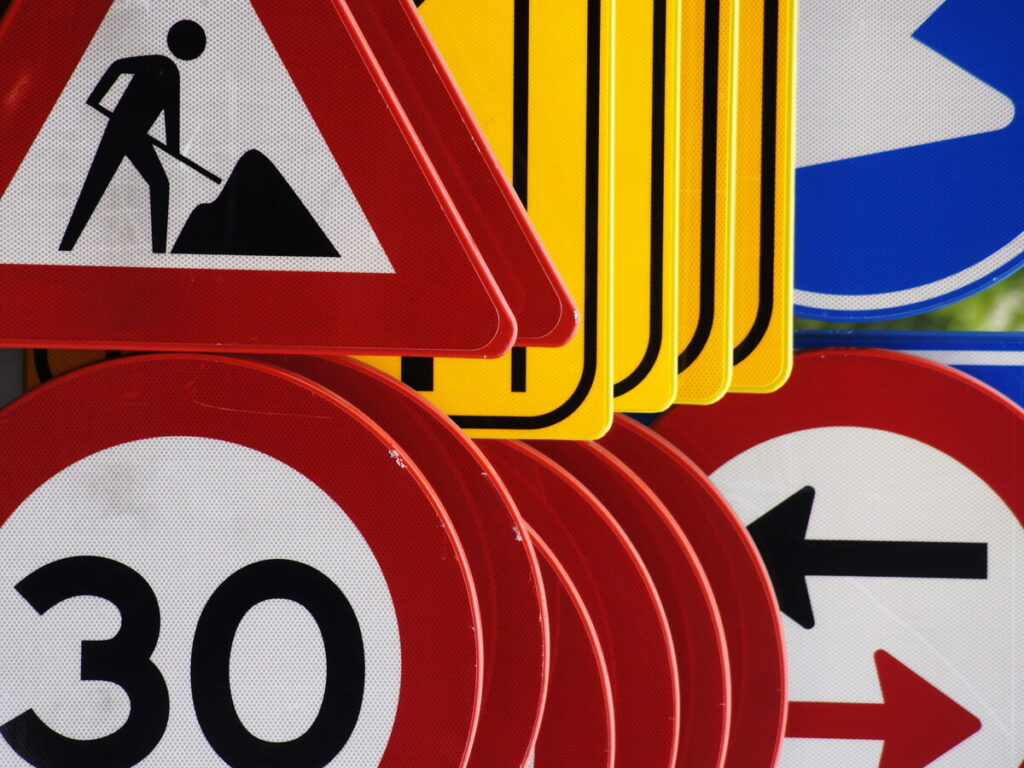
Соответствие и правила
Выбор подходящей светоотражающей пленки для дорожных знаков в Великобритании – это не просто выбор.; это требуется по закону. Эти правила гарантируют, что каждый знак будет хорошо виден и безопасен.. Поэтому, муниципальные советы и строители должны следовать этим правилам, чтобы обеспечить безопасность дорог и избежать неприятностей..
Основные моменты, которые следует помнить для соблюдения правил::
- Светоотражающая пленка должна соответствовать британским стандартам, таким как bs. 8442 для хорошего качества.
- Маркировка CE необходима. Эта маркировка указывает на то, что материал безопасен и соответствует правилам отражательной способности..
- Все светоотражающие материалы должны быть проверены перед установкой.. Советы проверяют каждый знак, чтобы убедиться, что он соответствует правилам..
- Знаки необходимо часто проверять и содержать в хорошем состоянии.. Они должны оставаться яркими и легко видимыми..
| Отражающий класс | Минимальная отражательная способность (кд/м²/люкс) | Типичный вариант использования |
|---|---|---|
| RA1 | 75 | Знаки автомагистралей и основных маршрутов, требующие высокой видимости |
| RA2 | 30 | Второстепенные и местные дороги с пониженной видимостью |
Баланс затрат и производительности
Важно найти правильный баланс между стоимостью и производительностью.. Некоторые люди думают, что использование более дешевых материалов экономит деньги.. Но это может сделать дороги менее безопасными и в дальнейшем стоить дороже.. Правила отражательной способности помогают покупателям выбрать лучшее защитное покрытие для каждой дороги..
Люди иногда путают оценки или забывают правила.. Например, использование инженерного уклона на оживленной дороге вместо более высокого уклона делает знаки труднее различимыми.. Это может вызвать больше сбоев, штраф, или задержки. Это также означает, что знаки, возможно, придется заменить раньше., Стоит больше в конце.
Разумный план учитывает как цену, так и срок службы материала.. Хотя покрытие RA1 стоит дешевле, подходит только для тихих дорог. С другой стороны, RA2 и R3B служат дольше и ярче, делая их лучше для главных дорог и автомагистралей. В конечном счете, выбор правильного класса гарантирует, что знаки останутся яркими и будут соответствовать нормам..
Правила отражательной способности защищают водителей и муниципалитеты. Они следят за тем, чтобы каждая вывеска соответствовала своему месту и служила долгие годы..
В таблице ниже показано, как RA1, RA2, и R3B разные:
| Фактор | RA1 | RA2 | Р3Б |
|---|---|---|---|
| Отражательная способность | Самый низкий | Умеренный | Самый высокий |
| Продолжительность жизни | 7 годы | 10–12 лет | 12–15 лет |
| Лучшее использование | Местные дороги | Городские дороги | Шоссе |
Выбор правильного стандарта для каждой дороги помогает водителям лучше видеть светоотражающие дорожные знаки.. Кроме того, это помогает им следовать правилам. Городские власти должны следить за тем, чтобы дорожные знаки соответствовали скорости.. Более того, им следует писать четко и выбирать лучшую отражающую способность для каждого места.. Для сложных проектов, им следует проверить официальные рекомендации или спросить экспертов. При этом, они обеспечивают безопасность дорожного движения для всех.
Часто задаваемые вопросы
Что делает “световозвращающий” означает для дорожных знаков?
Световозвращающий знак означает, что свет от фар автомобиля отражается обратно к водителю.. Благодаря этому знак будет легко увидеть ночью или в плохую погоду.. Водители могут быстро обнаружить важную информацию.
Почему некоторые знаки выглядят ярче других?
На некоторых знаках используется светоотражающая пленка более высокого класса., например RA2 или R3B. Эти материалы отражают больше света.. Знаки на оживленных или скоростных дорогах должны быть ярче в целях безопасности..
Как часто муниципалитеты должны проверять дорожные знаки на отражающую способность??
Советы должны проверять знаки каждые несколько лет. Они ищут выцветание или повреждение. Регулярные проверки помогают сохранять вывески яркими и легко различимыми..
Можно ли обновить старые знаки до более высокого стандарта светоотражания??
Да, муниципальные советы могут заменить старые знаки новыми, используя более светоотражающую пленку.. Модернизация помогает улучшить видимость и безопасность дорожного движения..
Кто решает, какой светоотражающий стандарт использовать для каждой дороги?
Правила устанавливает Департамент транспорта. Советы следуют этим правилам при выборе светоотражающей пленки.. Они выбирают правильный стандарт в зависимости от типа дороги и скорости..

